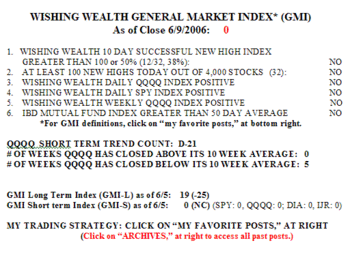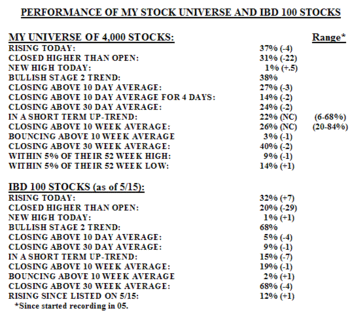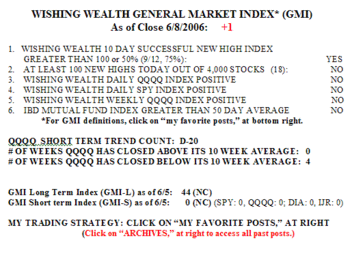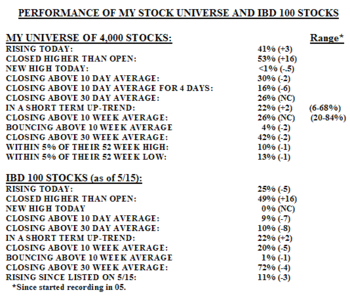The GMI remains at zero, as the market down-trend continued. Only 9-11%of the stocks in the Nasdaq 100, S&P 500 and Dow 30 indexes rose on Monday. 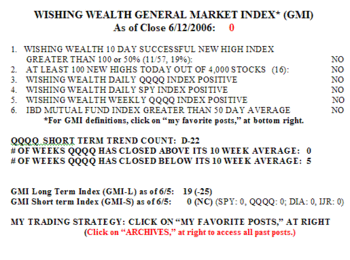 Only 9% of the Nasdaq 100 stocks closed above their 30 day averages, the lowest number ever, since I began counting this indicator last June. There were 16 new highs and 157 new lows in my universe of nearly 4,000 stocks. Monday was the 22nd day of the QQQQ down-trend. This is the type of market that traders dream of shorting…..
Only 9% of the Nasdaq 100 stocks closed above their 30 day averages, the lowest number ever, since I began counting this indicator last June. There were 16 new highs and 157 new lows in my universe of nearly 4,000 stocks. Monday was the 22nd day of the QQQQ down-trend. This is the type of market that traders dream of shorting…..
Meanwhile, the IBD 100 growth stocks continue to be slaughtered. Not a single one of the IBD 100 stocks posted to the list on 5/15 advanced on Monday. 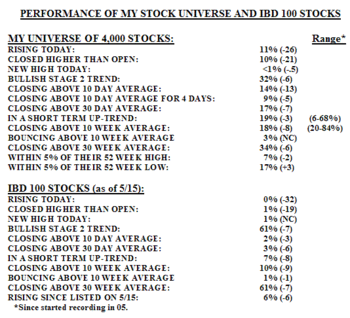 Almost all of these stocks closed below their 10 day, 30 day and 10 week averages. Only 6 of these 100 stocks posted on the list on 5/15 closed higher on Monday than they closed on 5/15. This means that the best and brightest growth stocks with great fundamentals are being sold off to persons looking for "bargains." The great trader, Jesse Livermore, used to say that it was amazing how much stock could be distributed to the public on the way down. Severe down-trends typically end when the public loses its appetite for low priced bargain stocks, way down from their highs. When I go long, I want to buy stocks heading to the moon, not fizzling rockets falling back towards the earth. Even the great HANS and AAPL are starting to show signs of a down-trend. According to the TC2005 scan of my stock universe, there are only 5 possible Rockets and 205 Submarines. It will take more than a sharp rebound to convince me to abandon my shorts and to buy stocks again.
Almost all of these stocks closed below their 10 day, 30 day and 10 week averages. Only 6 of these 100 stocks posted on the list on 5/15 closed higher on Monday than they closed on 5/15. This means that the best and brightest growth stocks with great fundamentals are being sold off to persons looking for "bargains." The great trader, Jesse Livermore, used to say that it was amazing how much stock could be distributed to the public on the way down. Severe down-trends typically end when the public loses its appetite for low priced bargain stocks, way down from their highs. When I go long, I want to buy stocks heading to the moon, not fizzling rockets falling back towards the earth. Even the great HANS and AAPL are starting to show signs of a down-trend. According to the TC2005 scan of my stock universe, there are only 5 possible Rockets and 205 Submarines. It will take more than a sharp rebound to convince me to abandon my shorts and to buy stocks again.
Please send your comments to: silentknight@wishingwealthblog.com.
